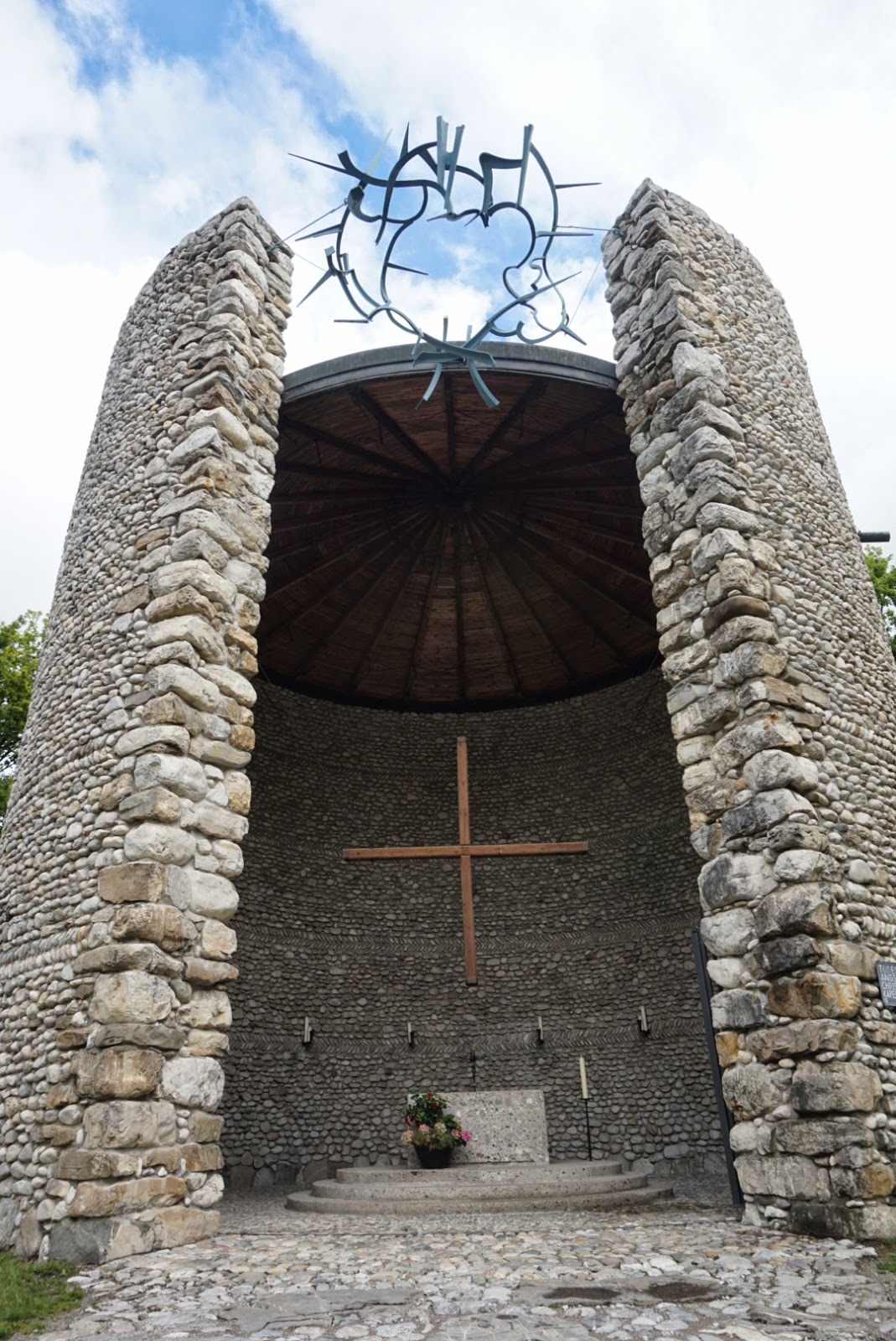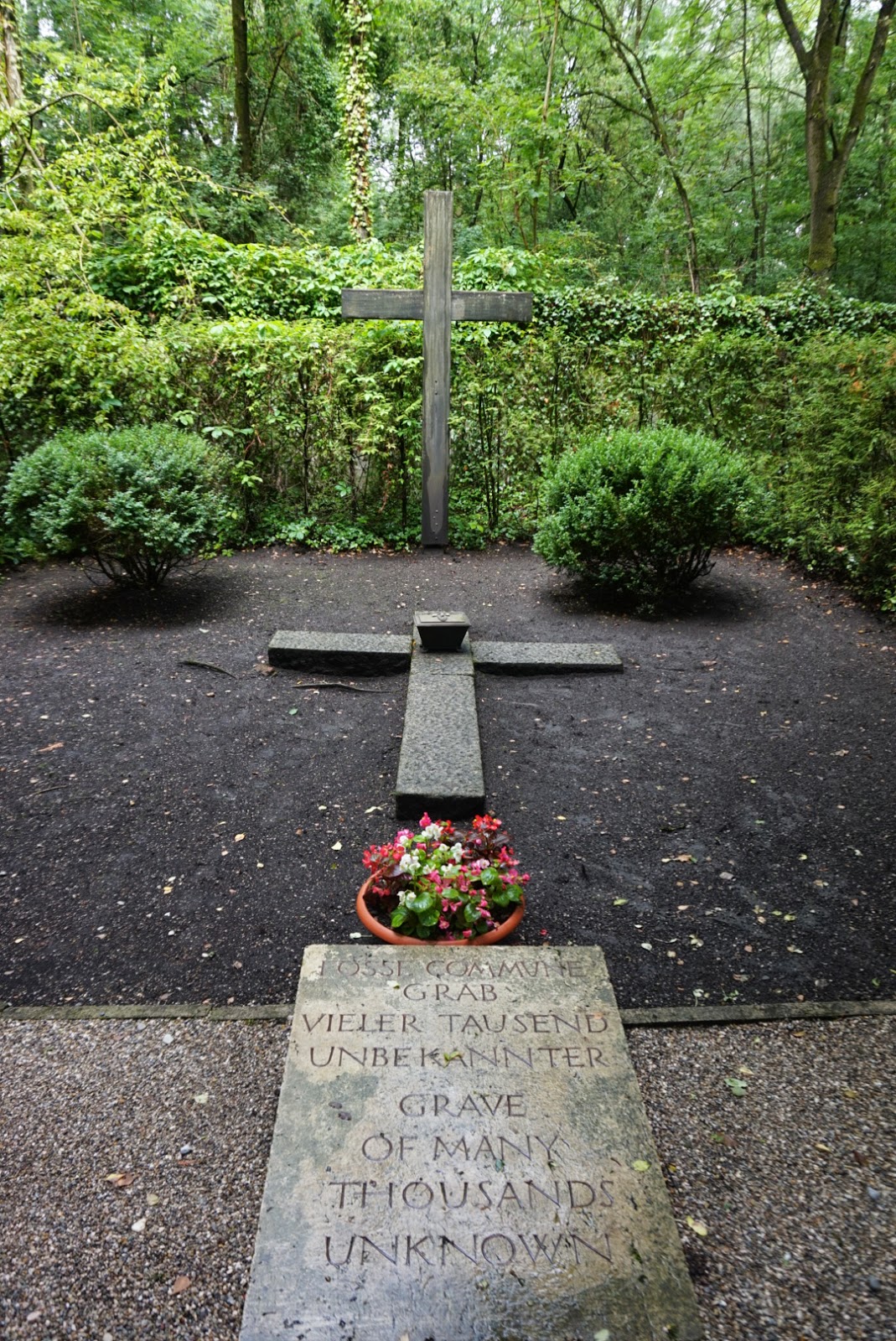I've struggled for over a week now to come up with the words to describe my experience at Dachau.
"How was it?" People ask.
The automatic response, the default response, always seems to be "Good."
But it wasn't good.
I fight to switch myself off autopilot when people ask.
"How was it?"
How was it? It was....it was.
It was sobering.
It was real.
It was incredibly educational.
It was really well done.
It was...horrifying. But inspiring. Horrifying to see how cruel and inhumane we can be to our fellow man. Inspiring to see how, despite the odds and circumstances, the human spirit can still be so resilient. Inspiring to learn how prisoners would risk their own lives to save those they could.
It was a lot.
The morning of, I struggled with whether or not I would take pictures while at the camp.
Was it disrespectful?
Was it wrong?
I wasn't sure. But when I got to the camp, I knew I had to. The camp stands today not only as a place of remembrance, but as an educational tool.
Those who do not learn from history are doomed to repeat it.
And something like this cannot happen again. Ever.
I took pictures in order to perpetuate that educational mission, in what little way I could. Maybe someone reads my blog, maybe someone sees the picture I posted on Facebook. Maybe it starts a discussion. Maybe it leads to a lesson, and a commitment to never let something like this happen again. Maybe they will never get the chance to make it here themselves, and this is the closest they'll get.
Who knows?
So, I took pictures. I'll publish a few here. As far as the others, I will share them with you should you wish to see them. All you have to do is ask.
View of the camp from the entrance gate
The first picture, at the beginning of the blog, is the entrance to the camp. On the gate, it says "Arbeit Macht Frei".
Work Makes You Free.
This is one of the ways the Nazis sold the idea of concentration camps to the German public.
"See, look! We are rehabilitating them, reeducating the prisoners. Here at Dachau, they will learn the meaning of good, hard work. All is well."
Dachau was a work camp, yes. But not many went free.
The camp was kept in spotless, immaculate condition until the bombing of Pearl Harbor (and until Germany had failed to take Russia--suddenly, they needed more artillery, more workers...and the cleanliness of camps was no longer a concern).
The beds were to be made to the millimeter. Uniforms were to be folded just so. Leaves were picked off trees before they dropped, to stop them from touching the ground. A water droplet in a freshly washed bowl was seen as completely unacceptable.
Anything deviating from these inhuman standards meant death.
Most were shot at Dachau, then cremated. The gas chambers were not used to the extent that they were at Auschwitz, or other death camps.
Because at Dachau, prisoners were there to work to death.
The roll call road, leading from the housing units to the main camp area.
Where the housing once was. 50-54 men would fit in a single unit, with four units to a row. At the time of liberation, however, over 2,000 men were crammed into space for 200.
The "beds"
A "prison within a prison". Dachau started as a prison for political opponents of the Nazi party. The political prisoners were often kept here, away from the rest of the general prison population.
The gas chamber and crematorium were cleverly disguised in a beautiful area of the camp. Back in the day, flowers were planted all along the outside. Prisoners were promised showers, and were lead through a waiting room into a changing room while they awaited their "showers". The crematorium was next door. Although the actual number is debated, it is estimated that as many as 11,000 lost their lives in the gas chambers at Dachau. The ovens were then used to destroy the evidence of the Nazi's cruelty. The chambers were also used to disinfect uniforms from the dead and diseased, so that they may be worn again.
Nazis were then hung from the rafters above the ovens after being found guilty of war crimes during the Dachau trials. Although Nuremberg gets the credit for having the war trials, Dachau had a series of its own, and they were completed with the same level of symbolism and reverence.
After the war, the camp's buildings were used as a refugee camp. Neighborhoods were built around it, and they still stand today. Perhaps that's the strangest thing, to see houses so close to a concentration camp. I can't imagine a sight like that simply being a part of my everyday.
Dachau was known for housing many members of the clergy, and after the war, the clergy were instrumental in keeping the place from destruction. Because of that, there are a number of memorials in the camp.
The Catholic memorial, located on what used to be the "plantation", where prisoners grew various crops.
The memorials to those that were killed in the execution ranges just outside of the crematorium.
As you can imagine, none were as moving or symbolic as the Jewish memorial, located next to what was once the camp's bunny farm.
The black rock is from Israel
The Star of David guards the door
The only exit is through the chimney
So much was said with a few black bricks.
I'm still processing all I saw, I think. My guide was very matter-of-fact about everything, which helped. I didn't have the emotional response I was expecting. I think I was in a slight state of shock for the entire tour.
Steve, my guide, has been doing these tours for over 10 years now. I asked him who some of his most memorable tour guests were while we were on the way to the memorial.
He paused, and thought awhile.
"The veterans," he answered, "who liberated the camp."
"And the survivors, and their families."
One family had come to Dachau to see where their late grandfather had lived and labored for three years during the war. They told Steve that up until the day he died, their grandfather would have a complete and utter melt down if he had less than a fourth of a loaf of bread in his kitchen. He could have an entire pantry full of food--but if he didn't have at least a fourth of a loaf of bread, he lost his mind.
Because bread was the currency of the camp.
And without bread, an inmate was sure to die.
Because bread was all the nourishment they had.
I looked at the small slices of bread I had tucked away in my purse much differently after that. To me, it was a snack.
To prisoners, it was their life.
Dachau was a lot.
It was tough.
It was hard.
But above all...it was worth it.
If you get the chance, go. Everyone should go. According to our guide, German school children must go--it's a part of their curriculum now.
But this is an experience everyone should have.
These camps, these conditions, exemplify the absolutely atrocious acts humans are capable of...but they also show the immense capacity for courage, altruism, and resilience that each of us possesses. And that is something no one should miss.
I end with a quote from "Man's Search for Meaning", which I started on the train to Munich:
"Everything can be taken from a man but one thing: the last of the human freedoms--to choose one's attitude in any given set of circumstances, to choose one's own way."
I will forever be inspired by the courage and persistence of Viktor Frankl, and those like him.
I'm sure you will be, too.
Thanks for reading.
kendall















No comments:
Post a Comment